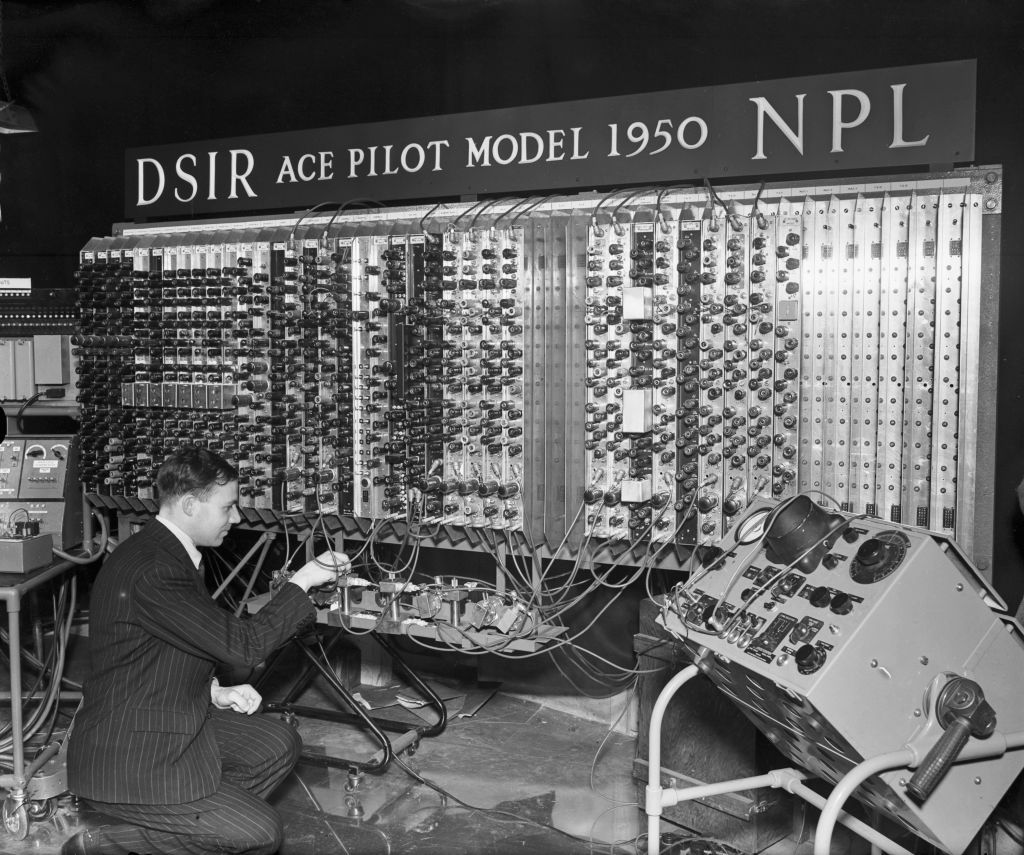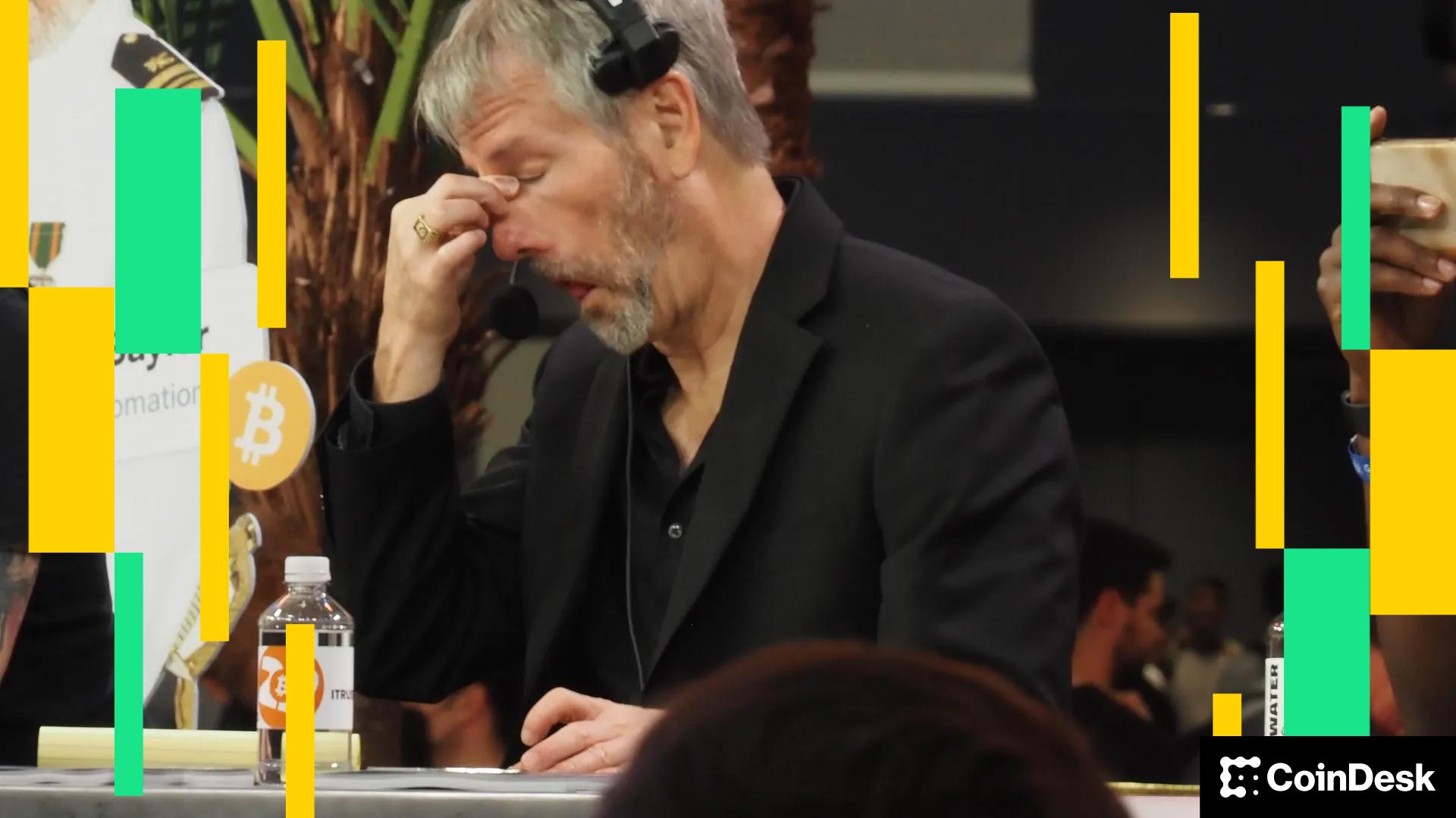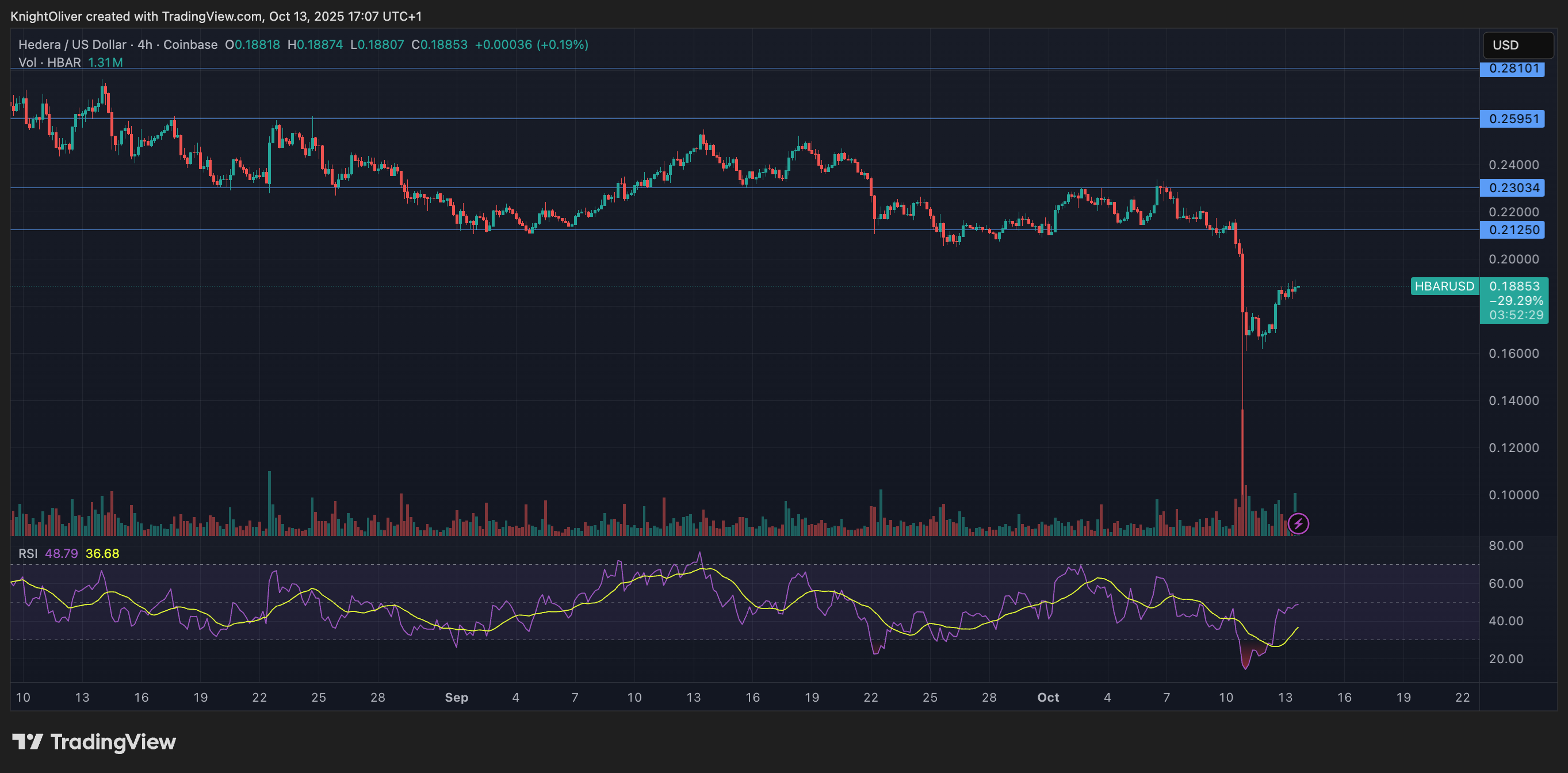Uncategorized
Web3 Has a Memory Problem — And We Finally Have a Fix

Web3 has a memory problem. Not in the “we forgot something” sense, but in the core architectural sense. It doesn’t have a real memory layer.
Blockchains today don’t look completely alien compared to traditional computers, but a core foundational aspect of legacy computing is still missing: A memory layer built for decentralization that will support the next iteration of the internet.
Muriel Médard is a speaker at Consensus 2025 May 14-16. Register to get your ticket here.
After World War II, John von Neumann laid out the architecture for modern computers. Every computer needs input and output, a CPU for control and arithmetic, and memory to store the latest version data, along with a “bus” to retrieve and update that data in the memory. Commonly known as RAM, this architecture has been the foundation of computing for decades.
At its core, Web3 is a decentralized computer — a “world computer.” At the higher layers, it’s fairly recognizable: operating systems (EVM, SVM) running on thousands of decentralized nodes, powering decentralized applications and protocols.
But, when you dig deeper, something’s missing. The memory layer essential for storing, accessing and updating short-term and long term data, doesn’t look like the memory bus or memory unit von Neumann envisioned.
Instead, it’s a mashup of different best-effort approaches to achieve this purpose, and the results are overall messy, inefficient and hard to navigate.
Here’s the problem: if we’re going to build a world computer that’s fundamentally different from the von Neumann model, there better be a really good reason to do so. As of right now, Web3’s memory layer isn’t just different, it’s convoluted and inefficient. Transactions are slow. Storage is sluggish and costly. Scaling for mass adoption with this current approach is nigh impossible. And, that’s not what decentralization was supposed to be about.
But there is another way.
A lot of people in this space are trying their best to work around this limitation and we’re at a point now where the current workaround solutions just cannot keep up. This is where using algebraic coding, which makes use of equations to represent data for efficiency, resilience and flexibility, comes in.
The core problem is this: how do we implement decentralized code for Web3?
A new memory infrastructure
This is why I took the leap from academia where I held the role of MIT NEC Chair and Professor of Software Science and Engineering to dedicate myself and a team of experts in advancing high-performance memory for Web3.
I saw something bigger: the potential to redefine how we think about computing in a decentralized world.
My team at Optimum is creating decentralized memory that works like a dedicated computer. Our approach is powered by Random Linear Network Coding (RLNC), a technology developed in my MIT lab over nearly two decades. It’s a proven data coding method that maximizes throughput and resilience in high-reliability networks from industrial systems to the internet.
Data coding is the process of converting information from one format to another for efficient storage, transmission or processing. Data coding has been around for decades and there are many iterations of it in use in networks today. RLNC is the modern approach to data coding built specifically for decentralized computing. This scheme transforms data into packets for transmission across a network of nodes, ensuring high speed and efficiency.
With multiple engineering awards from top global institutions, more than 80 patents, and numerous real-world deployments, RLNC is no longer just a theory. RLNC has garnered significant recognition, including the 2009 IEEE Communications Society and Information Theory Society Joint Paper Award for the work «A Random Linear Network Coding Approach to Multicast.» RLNC’s impact was acknowledged with the IEEE Koji Kobayashi Computers and Communications Award in 2022.
RLNC is now ready for decentralized systems, enabling faster data propagation, efficient storage, and real-time access, making it a key solution for Web3’s scalability and efficiency challenges.
Why this matters
Let’s take a step back. Why does all of this matter? Because we need memory for the world computer that’s not just decentralized but also efficient, scalable and reliable.
Currently, blockchains rely on best-effort, ad hoc solutions that achieve partially what memory in high-performance computing does. What they lack is a unified memory layer that encompasses both the memory bus for data propagation and the RAM for data storage and access.
The bus part of the computer should not become the bottleneck, as it does now. Let me explain.
“Gossip” is the common method for data propagation in blockchain networks. It is a peer-to-peer communication protocol in which nodes exchange information with random peers to spread data across the network. In its current implementation, it struggles at scale.
Imagine you need 10 pieces of information from neighbors who repeat what they’ve heard. As you speak to them, at first you get new information. But as you approach nine out of 10, the chance of hearing something new from a neighbor drops, making the final piece of information the hardest to get. Chances are 90% that the next thing you hear is something you already know.
This is how blockchain gossip works today — efficient early on, but redundant and slow when trying to complete the information sharing. You would have to be extremely lucky to get something new every time.
With RLNC, we get around the core scalability issue in current gossip. RLNC works as though you managed to get extremely lucky, so every time you hear info, it just happens to be info that is new to you. That means much greater throughput and much lower latency. This RLNC-powered gossip is our first product, which validators can implement through a simple API call to optimize data propagation for their nodes.
Let us now examine the memory part. It helps to think of memory as dynamic storage, like RAM in a computer or, for that matter, our closet. Decentralized RAM should mimic a closet; it should be structured, reliable, and consistent. A piece of data is either there or not, no half-bits, no missing sleeves. That’s atomicity. Items stay in the order they were placed — you might see an older version, but never a wrong one. That’s consistency. And, unless moved, everything stays put; data doesn’t disappear. That’s durability.
Instead of the closet, what do we have? Mempools are not something we keep around in computers, so why do we do that in Web3? The main reason is that there is not a proper memory layer. If we think of data management in blockchains as managing clothes in our closet, a mempool is like having a pile of laundry on the floor, where you are not sure what is in there and you need to rummage.
Current delays in transaction processing can be extremely high for any single chain. Citing Ethereum as an example, it takes two epochs or 12.8 minutes to finalize any single transaction. Without decentralized RAM, Web3 relies on mempools, where transactions sit until they’re processed, resulting in delays, congestion and unpredictability.
Full nodes store everything, bloating the system and making retrieval complex and costly. In computers, the RAM keeps what is currently needed, while less-used data moves to cold storage, maybe in the cloud or on disk. Full nodes are like a closet with all the clothes you ever wore (from everything you’ve ever worn as a baby until now).
This is not something we do on our computers, but they exist in Web3 because storage and read/write access aren’t optimized. With RLNC, we create decentralized RAM (deRAM) for timely, updateable state in a way that is economical, resilient and scalable.
DeRAM and data propagation powered by RLNC can solve Web3’s biggest bottlenecks by making memory faster, more efficient, and more scalable. It optimizes data propagation, reduces storage bloat, and enables real-time access without compromising decentralization. It’s long been a key missing piece in the world computer, but not for long.
Business
Strategy Bought $27M in Bitcoin at $123K Before Crypto Crash

Strategy (MSTR), the world’s largest corporate owner of bitcoin (BTC), appeared to miss out on capitalizing on last week’s market rout to purchase the dip in prices.
According to Monday’s press release, the firm bought 220 BTC at an average price of $123,561. The company used the proceeds of selling its various preferred stocks (STRF, STRK, STRD), raising $27.3 million.
That purchase price was well above the prices the largest crypto changed hands in the second half of the week. Bitcoin nosedived from above $123,000 on Thursday to as low as $103,000 on late Friday during one, if not the worst crypto flash crash on record, liquidating over $19 billion in leveraged positions.
That move occurred as Trump said to impose a 100% increase in tariffs against Chinese goods as a retaliation for tightening rare earth metal exports, reigniting fears of a trade war between the two world powers.
At its lowest point on Friday, BTC traded nearly 16% lower than the average of Strategy’s recent purchase price. Even during the swift rebound over the weekend, the firm could have bought tokens between $110,000 and $115,000, at a 7%-10% discount compared to what it paid for.
With the latest purchase, the firm brought its total holdings to 640,250 BTC, at an average acquisition price of $73,000 since starting its bitcoin treasury plan in 2020.
MSTR, the firm’s common stock, was up 2.5% on Monday.
Business
HBAR Rises Past Key Resistance After Explosive Decline

HBAR (Hedera Hashgraph) experienced pronounced volatility in the final hour of trading on Oct. 13, soaring from $0.187 to a peak of $0.191—a 2.14% intraday gain—before consolidating around $0.190.
The move was driven by a dramatic surge in trading activity, with a standout 15.65 million tokens exchanged at 13:31, signaling strong institutional participation. This decisive volume breakout propelled the asset beyond its prior resistance range of $0.190–$0.191, establishing a new technical footing amid bullish momentum.
The surge capped a broader 23-hour rally from Oct. 12 to 13, during which HBAR advanced roughly 9% within a $0.17–$0.19 bandwidth. This sustained upward trajectory was characterized by consistent volume inflows and a firm recovery from earlier lows near $0.17, underscoring robust market conviction. The asset’s ability to preserve support above $0.18 throughout the period reinforced confidence among traders eyeing continued bullish action.
Strong institutional engagement was evident as consecutive high-volume intervals extended through the breakout window, suggesting renewed accumulation and positioning for potential continuation. HBAR’s price structure now shows resilient support around $0.189–$0.190, signaling the possibility of further upside if momentum persists and broader market conditions remain favorable.

Technical Indicators Highlight Bullish Sentiment
- HBAR operated within a $0.017 bandwidth (9%) spanning $0.174 and $0.191 throughout the previous 23-hour period from 12 October 15:00 to 13 October 14:00.
- Substantial volume surges reaching 179.54 million and 182.77 million during 11:00 and 13:00 sessions on 13 October validated positive market sentiment.
- Critical resistance materialized at $0.190-$0.191 thresholds where price movements encountered persistent selling activity.
- The $0.183-$0.184 territory established dependable support through volume-supported bounces.
- Extraordinary volume explosion at 13:31 registering 15.65 million units signaled decisive breakout event.
- High-volume intervals surpassing 10 million units through 13:35 substantiated significant institutional engagement.
- Asset preserved support above $0.189 despite moderate profit-taking activity.
Disclaimer: Parts of this article were generated with the assistance from AI tools and reviewed by our editorial team to ensure accuracy and adherence to our standards. For more information, see CoinDesk’s full AI Policy.
Business
Crypto Markets Today: Bitcoin and Altcoins Recover After $500B Crash

The crypto market staged a recovery on Monday following the weekend’s $500 billion bloodbath that resulted in a $10 billion drop in open interest.
Bitcoin (BTC) rose by 1.4% while ether (ETH) outperformed with a 2.5% gain. Synthetix (SNX, meanwhile, stole the show with a 120% rally as traders anticipate «perpetual wars» between the decentralized trading venue and HyperLiquid.
Plasma (XPL) and aster (ASTER) both failed to benefit from Monday’s recovery, losing 4.2% and 2.5% respectively.
Derivatives Positioning
- The BTC futures market has stabilized after a volatile period. Open interest, which had dropped from $33 billion to $23 billion over the weekend, has now settled at around $26 billion. Similarly, the 3-month annualized basis has rebounded to the 6-7% range, after dipping to 4-5% over the weekend, indicating that the bullish sentiment has largely returned. However, funding rates remain a key area of divergence; while Bybit and Hyperliquid have settled around 10%, Binance’s rate is negative.
- The BTC options market is showing a renewed bullish lean. The 24-hour Put/Call Volume has shifted to be more in favor of calls, now at over 56%. Additionally, the 1-week 25 Delta Skew has risen to 2.5% after a period of flatness.
- These metrics indicate a market with increasing demand for bullish exposure and upside protection, reflecting a shift away from the recent «cautious neutrality.»
- Coinglass data shows $620 million in 24 hour liquidations, with a 34-66 split between longs and shorts. ETH ($218 million), BTC ($124 million) and SOL ($43 million) were the leaders in terms of notional liquidations. Binance liquidation heatmap indicates $116,620 as a core liquidation level to monitor, in case of a price rise.
Token Talk
By Oliver Knight
- The crypto market kicked off Monday with a rebound in the wake of a sharp weekend leverage flush. According to data from CoinMarketCap, the total crypto market cap climbed roughly 5.7% in the past 24 hours, with volume jumping about 26.8%, suggesting those liquidated at the weekend are repurchasing their positions.
- A total of $19 billion worth of derivatives positions were wiped out over the weekend with the vast majority being attributed to those holding long positions, in the past 24 hours, however, $626 billion was liquidated with $420 billion of that being on the short side, demonstrating a reversal in sentiment, according to CoinGlass.
- The recovery has been tentative so far; the dominance of Bitcoin remains elevated at about 58.45%, down modestly from recent highs, which implies altcoins may still lag as capital piles back into safer large-cap names.
- The big winner of Monday’s recovery was synthetix (SNX), which rose by more than 120% ahead of a crypto trading competition that will see it potentially start up «perpetual wars» with HyperLiquid.
-

 Business12 месяцев ago
Business12 месяцев ago3 Ways to make your business presentation more relatable
-

 Fashion12 месяцев ago
Fashion12 месяцев agoAccording to Dior Couture, this taboo fashion accessory is back
-

 Entertainment12 месяцев ago
Entertainment12 месяцев ago10 Artists who retired from music and made a comeback
-

 Entertainment12 месяцев ago
Entertainment12 месяцев ago\’Better Call Saul\’ has been renewed for a fourth season
-

 Entertainment12 месяцев ago
Entertainment12 месяцев agoNew Season 8 Walking Dead trailer flashes forward in time
-

 Uncategorized4 месяца ago
Uncategorized4 месяца agoRobinhood Launches Micro Bitcoin, Solana and XRP Futures Contracts
-

 Business12 месяцев ago
Business12 месяцев ago15 Habits that could be hurting your business relationships
-

 Entertainment12 месяцев ago
Entertainment12 месяцев agoMeet Superman\’s grandfather in new trailer for Krypton





